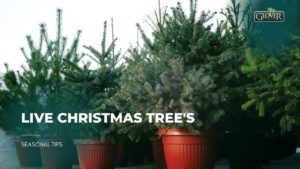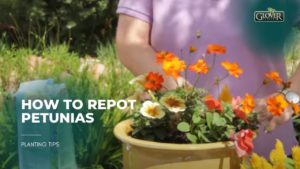Did you know that iconic Spring flowers like tulips, daffodils and hyacinths actually start their life cycles as fall planted bulbs? When you think of the first sign of warmer weather in Spring, chances are you’re thinking of the first bright-colored flower popping up out of the snow-covered ground. But these flowers must first be planted as bulbs the previous year.
Which bulbs should you plant in the Fall?
The following flowers are ideally planted as bulbs in the Fall. You’ll typically find these sold beginning in September.
- Tulip
- Daffodil
- Crocus
- Giant Allium
- Flag/Bearded Iris
- Dutch Iris
- Hyacinth
- Grape Hyacinth (Muscari)
- Wood Hyacinth (Bluebell)
- Fritillaria
- Snowdrops
- Glory of the Snow (Chionodoxa)
- Squill
- Grecian Anemone/Windflower
When should you plant bulbs?
All of the bulbs that bloom in the Spring need to be planted in the Fall. These bulbs, including tulips, daffodils and hyacinths, need a cold, dormant period in the ground to be able to trigger blooming in the Spring. The best time to plant these bulbs is beginning in late September when the weather cools off and daytime temperatures are in the 80s or lower. Planting them too early will make them push out growth too soon after planting. You can continue planting bulbs up until the ground freezes, which typically happens in early December at the earliest.
Do bulbs come back every year?
Most all of your Spring-blooming bulbs planted in the Fall are perennials. This means that each bulb you plant will produce a flower year after year. Some bulbs, tulips and hyacinths especially, are “short-lived” perennials and produce for many years under ideal conditions. These bulbs may stop after a few years and might need to be replaced with new bulbs, though.
How deep should you plant bulbs?
Different bulbs should be planted at different depths in the soil. Large bulbs like alliums and tulips should be planted around 6”-8” deep, while smaller bulbs should be planted around 2”-3” deep. A common rule for bulbs is to plant them at a depth of 2-3 times their height. Generally, the larger the bulb, the deeper it should be planted. Bulb planting doesn’t need to be exactly precise, but following these guidelines is a good practice.
Can you plant multiple bulbs together?
Bulbs, unlike shrubs or perennials, can be planted very closely together. Most bulbs will produce one flower per season, so planting multiple bulbs close together is a good way to get multiple blooms. You can plant a few of the same variety in the same hole together, as long as the top of each bulb is facing upwards and they are not stacked directly on top of one another. Another popular method of bulb planting is the “lasagna method,” where different types of bulbs are layered together based on their bloom time and correct planting depth. You can plant masses of the same bulbs, a combination of complementary colors, or plant lots of variety together for a surprise in the Spring!
What tools do you need for planting bulbs?
- Gloves: Keep your hands clean when digging through dirt and mulch. Some bulbs, such as Hyacinths, can cause irritation when touched, so gloves should be worn when planting them.
- Bulb Planter: A bulb planter is a hand-held tool that looks like an open metal can with a handle attached to it. This allows you to remove a section of dirt easily so that you can drop one or more bulbs right in. They usually are marked with measurements so that you know exactly what depth you are planting at.
- Garden Trowel: A handy garden trowel works as well, and they often have measurements so you know the depth for each type of bulb as well.
- Planting Auger: If you’re planting bulbs in bulk, an auger drill bit can be very helpful. Just pop the bit onto a drill and let it do the dirty work for you. Just be careful when using it around established trees and shrubs to avoid root damage.
- Comfort: Don’t forget to get comfortable when planting bulbs or doing any other kind of yard work. A Foam Pad, Knee Pads, or a Kneeler/Bench make a huge difference when planting bulbs, weeding or doing other tasks in the garden.
Should you fertilize bulbs?
There are a few recommended fertilizer products that you can use when you plant bulbs. Most bulbs will only need a slow-release fertilizer that will make nutrients available to them when they start to wake up in the Spring.
Dutch Bulb Food: Slow-release fertilizers that are usually marketed by different brands as “Dutch” Bulb food. They often provide necessary nutrients and trace elements for proper root development and growth of bulbs. Best used at the time of planting.
Bone Meal: A slow-release fertilizer made of ground animal bones that is high in phosphorus, potassium and calcium.
A note about Bone Meal: Bone Meal is traditionally recommended when planting bulbs in most parts of the country to add phosphorus to soils. The caveat with bone meal, though, is that it only works in acidic soils (7 pH and lower) and is not effective in Utah’s mostly high alkaline soil (usually 7 pH and higher). The good news is that Utah soils are already high in animal bone meal and phosphorus due to the amount of fish bones left behind by the ancient Lake Bonneville.


